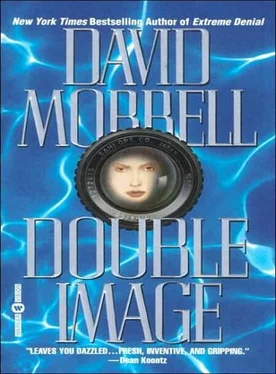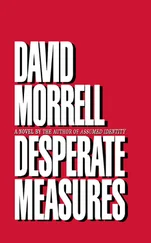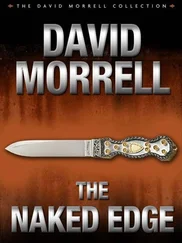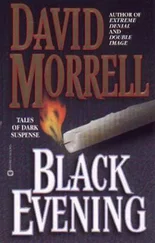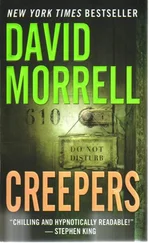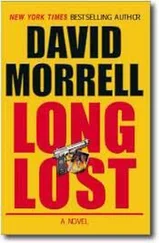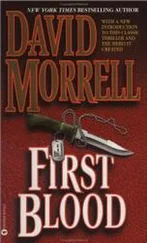Movement behind reeds against the bank of the stream revealed a terrified figure emerging from a hiding place. The figure was a woman, and Coltrane became even more attentive, trying to identify Rebecca Chance’s features. But despite her disheveled hair and grimy face, it was instantly clear that she wasn’t Rebecca.
“I keep forgetting she’s only a supporting player.”
“But she has an important part,” Toler said.
After the woman had been helped to the wagon train and cared for, introducing herself as Mary Beecham, Coltrane understood. There had been someone else in their party, she told Cabot, sobbing – her sister, Amy. The Indians who had attacked their wagon had taken her with them.
Because the attack had happened only a few hours earlier, there was still a chance to get Amy back if a rescue party set out immediately, but that would leave the wagon train undermanned and vulnerable. The pioneers had to make a moral choice – whether to forget about Amy, look after themselves, and keep going, or whether to jeopardize the good of the many for the possible good of one person. Cabot’s doe-eyed looks at Mary made clear that he had fallen instantly in love with her. He told the pioneers that they could do what they wanted but that he was going to rescue Mary’s sister. Coltrane had the strong suspicion that Cabot was motivated less by wanting to rescue Amy than he was by wanting to impress Mary. In a dramatically staged scene, Cabot galloped off with six men, following the raiding party’s tracks, while the wagon train proceeded in a different direction.
Coltrane felt light-headed as the scene shifted and he saw Rebecca secured by a rope, stumbling next to the raiding party, who jeered at her from their horses. She, too, had disheveled hair and grimy features, but nothing could obscure her riveting beauty. Her blouse had been torn, revealing more of her right shoulder, almost to her upper breast, than he had realized was permitted by censors back then. Similarly, her skirt was torn up to her knees, exposing her stockings, the tantalizing sight of which seemed more sensual than bare flesh would have been. The animal quality suggested by her lush, tangled hair, the insolence in her dark eyes, the defiance in her full lips made for as erotic a combination as he had ever seen.
“My God,” he whispered.
“Yes,” Toler said, “she could have been a star. But I never saw her in another movie.”
“This was her last. She disappeared.”
Coltrane watched, awestruck as a member of the raiding party tugged the rope and made her stumble, a movement that she accomplished with the grace of a dancer while still making it look like a stumble. In fact, all of her actions had similar grace. Her body had a sensual fluidness that caused every gesture, no matter how trivial, to be impossible to look away from. When she spoke, Coltrane wasn’t prepared for how wonderfully full-throated and sonorous her voice was. Whatever Hispanic accent she had brought to Hollywood, she had worked hard to eliminate. She had re-created herself, and yet there remained the slightest hint of the origins she was trying to disguise.
Coltrane was so enthralled that he had trouble concentrating when other actors were featured in the story. Bruce Cabot pursued the raiding party, overcoming brush fires, thunderstorms, swollen rivers, buffalo stampedes, avalanches, and ambushes in his determined effort to save the sister of the woman he loved (the structure of the film was obviously indebted to the cliffhanger serials that Seitz had directed in his youth). Meanwhile, the wagon train overcame similar obstacles. A young man had taken over Bruce Cabot’s role as expedition leader and was proving himself to be such a hero that Mary, praying for Cabot to come back with her sister, had fallen in love with Cabot’s substitute. Seitz crosscut between the two sets of adventures. To build suspense as to whether Rebecca’s character was still alive, her screen time was reduced after an Indian, angered by her insolence, grabbed her long black hair and wielded a knife to cut it off.
Watching Cabot scale a cliff and race through a forest, Coltrane waited with mounting frustration for Rebecca to reappear, and when she finally did, the Indian was hurling her off a cliff into a river. The fight between Cabot and the Indian was suspenseful, but all Coltrane cared about was another glimpse of Rebecca, who made him inhale sharply when he saw her wading from the river, her wet clothes sticking to her, her soaked dark hair slicked back against her head and hanging down her back. Every curve of her body was emphasized. It was as if she were one with the water, her body gathering substance as she emerged from it, retaining the fluid grace of the waves. She was Venus rising from the water. With her head tilted back, every magnificent detail of her face was pronounced, and if it had earlier seemed questionable that Bruce Cabot would instantly fall in love with Mary Beecham, there was no strain of credulity at all when he triumphed over the Indian and hurried to help Rebecca, only to see her wading from the sensuous waters and to be overcome with attraction.
In the end, he brought Rebecca back to the wagon train, where he announced that he and Rebecca were going to be married. But Rebecca’s sister had a surprise of her own – she was going to be married to the man who had taken Bruce Cabot’s place. Hugs and kisses. A good laugh all around, no hint whatsoever of the sexual complexities embedded in the story. As the camera panned to the snowcapped mountains, the music reached a crescendo. The End appeared. The screen went black.
In the darkness, Coltrane heard the camera whirring. He heard a chair creak as Vincent stood in the darkness, presumably to go into the projection room and shut off the machine.
“You said Rebecca Chance disappeared after making this movie?” Vincent’s disembodied voice asked.
Coltrane was so enraptured by what he had seen that he had to force himself to speak. “That’s right.”
“When I told you I didn’t know much about Winston Case, I neglected to tell you all of what I did know,” Vincent said.
“Oh?”
“This was his last picture, too. He disappeared after producing it.”
COLTRANE RETURNED TO PACKARD’S HOUSE AT TWO IN THE morning. His circles of confusion not only had come back but were more severe than ever. His mind was filled with a welter of overlapping blurs. Surely the police would have known that Rebecca Chance wasn’t the only person associated with The Trailblazer to disappear. Why hadn’t Winston Case’s disappearance also been noted in the newspaper? The two incidents would have reinforced each other and made a good story. Had the studio covered it up? Or had Winston Case’s “disappearance” been merely a retreat from the movie business, which would have been the same as vanishing from the face of the earth, as far as Hollywood was concerned.
In his kitchen, the red light on his answering machine was blinking.
Uneasy, he pressed the play button.
“Mitch, are you… I’m beginning to worry.” Jennifer sounded as if she’d just walked swiftly from somewhere or was having trouble restraining her emotions. “Have we got a problem? Duncan Reynolds phoned me at the magazine to ask when he could expect the issue that features your collaboration with Packard. He happened to mention that you’d talked to him from New Haven the day before and that you’d be back in Los Angeles last night. That was certainly news to me. Without him, I wouldn’t even have known that you have a telephone and an answering machine over there and what your number is. If you don’t want to see me, fine. I have no intention of crowding you. But whatever’s going on, we still have to work together. I need those photographs. You don’t have to bring them over. Just FedEx them. But for heaven’s sake, do something .”
Читать дальше
